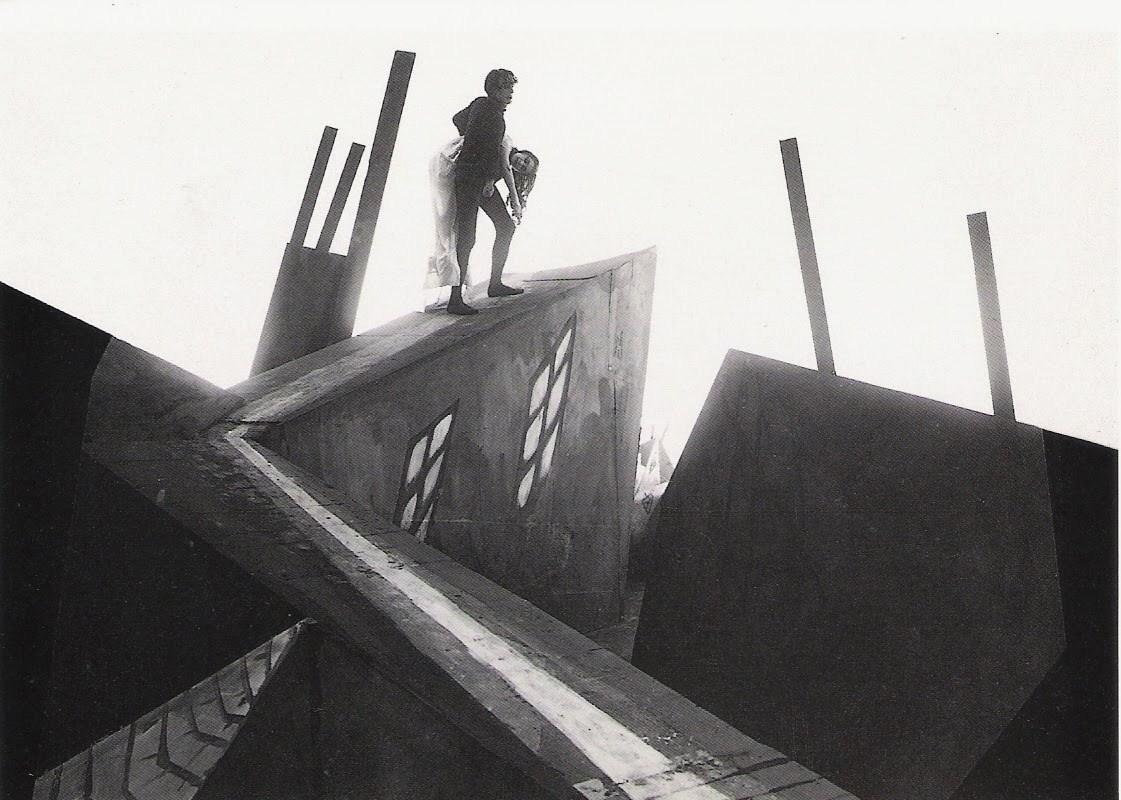I will start this review by saying that this review contains spoilers. I realize it’s almost a century-old film, but as I had just seen it for the first time, there are obviously those who will be seeing it for the first time, too and saying “well, it’s been around forever!” is no excuse to spoil the fun for anyone. Anyway, that being said…
Robert Wiene’s 1920 hit film The Cabinet of Dr. Caligari is not only a film that must have been ripe inspiration for Tim Burton in terms of its design, but is also a fantastic exploration into the mind of mental illness. As many films have tried since, this must have been one shocking film of its time by offering the audience an unreliable protagonist that forces the viewer to think much more deeply about the conflict in the film – as well as the conflict outside their front door. The film follows a man named Francis as he tells the story of the mysterious Dr. Caligari and the sleepwalker living in his cabinet.
Seeing as this was my first foray into the world of German Expressionist filmmaking, I was not expecting such elaborate set designs and gothic style make-up or costuming that would make any Hot Topic regular feel at home.
However, long before the idea of Gothicism became a sweeping teenage trend, the use of intricate, topsy-turvy sets serve to show the world as seen through the eyes of someone with mental illness with ingenious creativity. While the story is perhaps a bit too poorly paced for my liking, this expressionist art on display in this film certainly proves itself to be about the most creative use of imagery since George Méliés’ A Trip to the Moon eighteen years prior.
Putting aside my unabashed love for the design of the film, there are still quite a few flaws for me in terms of the story itself. Despite it only being a little over an hour long, its pacing is all over the place. Perhaps this was the intention of the filmmaker, but for me it felt too much like a rollercoaster. At first the film moves too abruptly to setting up location and characters, then slows down for a large chunk of the film where it hardly explores the wonderful avenues it sets itself up for in terms of conflict or mystery, before it finally reaches its conclusion before any mystery is developed. As a film that is about attempting to uncover who is murdering the townsfolk, it offers very little time in the whole detecting department, and almost right away answers the questions the viewer has.
But if the ending is any indication, maybe there is more here than meets the eye. I’ve read many others discuss the film as almost an early indication of what was to come during the time of World War II many years later. For instance, Dr. Caligari represents the possessive and brainwashing attributes of the German government and Cesare, his somnambulist science experiment, represents the mindless killing machines of Adolf Hitler’s Nazi regime. We always wonder, ”how did a man convince an entire nation that one race was superior to all others and then force them to murder millions for no reason whatsoever?” Perhaps that’s the same question we ask in Dr. Caligari, albeit to a much smaller level. Is it the fascist ideal that’s mentally ill or are we, as bystanders, the ones locked in the madhouse? Maybe it’s reading too much into a film when it was long before Nazism was even a thought in the world, but it’s still a very intriguing thought.
Judging the film solely based on what it must have meant back in 1920, it’s a fine piece of creepy entertainment. A bit lacking in the mystery department, and could’ve easily explored so many avenues that seemed infinitely exciting and would’ve made for a much more worthwhile film for me, but for what it is, it’s certainly one of the best of 1920s so far. In particular, the artistry present in the technical aspects is especially admirable and really draws you in as a viewer into this fantastical world that has served as an inspiration for many filmmakers since.




No comments:
Post a Comment